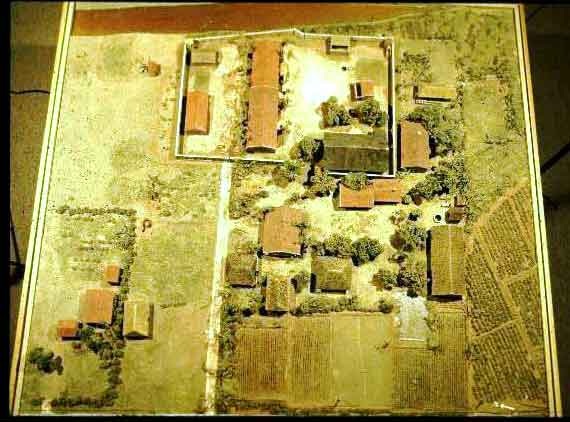Shortly after 2:00 am on the morning of November 21, 1970, the night sky near Hanoi was shattered by the roar of planes on their way to undertake one of the most carefully planned and executed rescue missions of the Vietnam War – the raid on Son Tay Prison to rescue American prisoners of war. Son Tay, 23 miles west of Hanoi, the capital of North Vietnam, was attacked and, less than an hour later, the plan had been carried out faultlessly. Then the bitterly disappointed Raiders were on their way home, having rescued no-one.
The USAF Intelligence Unit had been monitoring a compound near Son Tay since it was first suspected in 1968 of being a prisoner of war camp. Carefully analyzing hundreds of aerial photographs, alongside intelligence gathered on the ground and elsewhere, the analysts determined that there were at least 55 American servicemen being held at the camp.
This information was taken to Brigadier General James Allen, who was the Deputy Director for Plans and Policy in the Air Force; once he was convinced of the validity of the analysis, he took the issue to Brigadier General Donald Blackburn, who was the Special Assistant for Counterinsurgency and Special Activities (SACSA) in the US Army. BG Blackburn reported directly to the Joint Chiefs of Staff, so he took the intelligence to General Wheeler, who was the outgoing JCS Chairman at the time. The recommendation was that the POW’s at Son Tay be rescued. General Wheeler concurred, and set up a planning group tasked with conducting a feasibility study.
Code name Polar Circle was the study into rescuing the captured Americans by conducting a raid on Son Tay Prison in the hours of darkness. The fifteen men working on this study found that the plan was feasible and recommended that the raid be executed as soon as possible. The treatment being given the captured Americans was, at times, inhuman and their living conditions atrocious. Polar Circle also determined that there were at least 61 men being held at the camp.
Within a couple of months, Operation Ivory Coast was launched to undertake the detailed planning and training for the rescue attempt. Overall command of the entire operation was placed in the very capable hands of Air Force Brigadier General LeRoy Manor, who assembled a crew of planning and support specialists. The planning had to be superb, as Son Tay was in one of the most heavily defended areas of North Vietnam.
They would have to contend with MIG fighters, as there were bases in the area as well as anti-aircraft batteries and surface-to-air missile sites strategically placed by the North Vietnamese. Undaunted, Manor’s specialists undertook the logistics, weather forecasting, and fine planning to identify two possible windows of opportunity for the mission. These dates were the 21st – 25th of October or the 21st – 25th of November. Both these periods offered the best conditions in terms of the weather forecast and moonlight.
While General Manor and his staff were undertaking the planning, command of the ground forces that would undertake the actual raid was given to Special Forces Colonel Arthur “Bull” Simons. He selected over a hundred volunteers from the 6th and 7th Special Forces Groups, based at Eglin Air Force Base in Florida.

With the assistance of the CIA, a full-scale model, called Barbara, was built of the camp; later they built a full-scale replica of the camp using poles staked in the ground and covered with canvas. This replica was used for training so that when the mission arrived at the actual camp the layout would be second nature to them. Simons and his Green Berets undertook over 170 rehearsals of the raid on their mock-up camp until Manor and Simons were satisfied that their men were ready to launch the mission.
The training took into account all the scenarios that the team could think of, right down to planning to take bolt cutters with them, as they had been told that the prisoners may well be shackled to their beds. This training was done under an impenetrable veil of security and the usual inter-forces rivalry that bedeviled so many operations was absent; all the teams worked seamlessly together.
At the same time, meetings were held with Vice Admiral Fred Bardshar on board the USS America, which would create confusion by using its naval aircraft to fly a diversionary mission. At this time there was a ban on bombing missions, so planes flew without ordnance except for those that would undertake and search and rescue missions.
The naval aviators would fly circles over Phuc Yen Air Base, which housed the MIGS that undertook night missions, thus pinning the MIGS on the ground and forcing the North Vietnamese to use missiles for defense instead of the MIGS. This also had the effect of turning the North Vietnamese radar to the east while the raiders approached from the west.
Continued on Page 2
The post The Raid: The Failed Son Tay Prison Rescue Mission appeared first on WAR HISTORY ONLINE.
